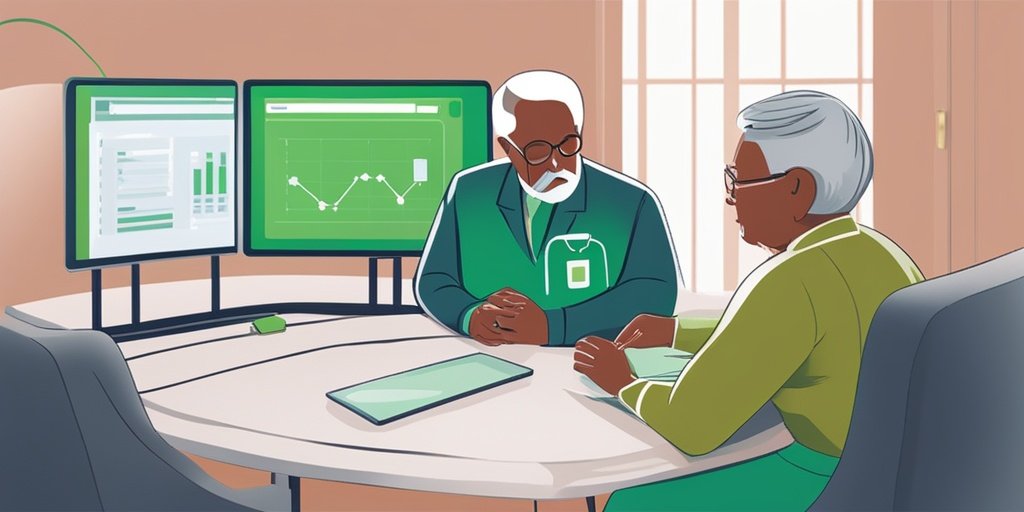⚡ Quick Summary
The FLOAT project utilizes a machine learning algorithm to identify and recruit cognitively healthy older adults for remote neuropsychological assessments, aiming to norm well-established instruments. With an initial response rate of 2.4%, the project seeks to enhance access to cognitive assessments for underrepresented groups.
🔍 Key Details
- 📊 Participants: 7,000 prospective participants aged 51-104 identified
- 🧩 Exclusions: Individuals with severe psychiatric disorders or no internet access
- ⚙️ Recruitment Method: Email outreach targeting ages 60-79 with low ADRD risk
- 🏆 Enrollment: 107 agreed to participate, with 30 currently enrolled
🔑 Key Takeaways
- 📊 TeleNeuropsychology (TeleNP) can reduce wait times for cognitive assessments.
- 💡 Machine learning is employed to identify cognitively healthy older adults.
- 👩🔬 Recruitment efforts are resource-intensive but necessary for normative data development.
- 🏆 Initial response rate of 2.4% indicates potential for future recruitment strategies.
- 🌍 Focus on underrepresented groups to enrich the cohort for normative data.
- 📈 Future waves of recruitment will include younger and older age groups.

📚 Background
Access to cognitive assessments is crucial for early detection of conditions like Alzheimer’s disease and related dementias (ADRD). However, traditional in-person assessments can be challenging for medically compromised and socially disadvantaged populations. The FLOAT project aims to bridge this gap by utilizing remote administration of neuropsychological instruments, thereby expanding access and reducing wait times.
🗒️ Study
The FLOAT project, conducted in Florida, employs a machine learning algorithm to identify older adults aged 50 and above who are at low risk for developing ADRD. The study focuses on recruiting participants who are cognitively healthy to norm well-established neuropsychological instruments administered remotely. Phases I and II of the study involved extensive email outreach to engage eligible participants.
📈 Results
Out of 5,112 eligible individuals, only 107 agreed to participate, with 30 currently enrolled. The recruitment process revealed that a significant number of potential participants either did not respond or were excluded due to various criteria. The initial affirmative response rate of 2.4% is a promising start, indicating the need for ongoing recruitment efforts.
🌍 Impact and Implications
The FLOAT project represents a significant step towards improving access to cognitive assessments for older adults. By leveraging machine learning to identify suitable participants, the project not only aims to norm neuropsychological instruments but also seeks to include underrepresented groups in research. This approach could lead to more equitable healthcare solutions and better understanding of cognitive health in diverse populations.
🔮 Conclusion
The FLOAT project highlights the potential of remote neuropsychological assessments and the innovative use of machine learning in participant recruitment. As the project progresses, it aims to refine its strategies to enhance response and enrollment rates, ultimately contributing to the development of normative data that can benefit a wide range of older adults. Continued research in this area is essential for advancing cognitive health assessments.
💬 Your comments
What are your thoughts on the use of technology in cognitive assessments for older adults? We would love to hear your insights! 💬 Leave your comments below or connect with us on social media:
Clinical Manifestations.
Abstract
BACKGROUND: Remote administration of well-established neuropsychological instruments (TeleNeuropsychological or TeleNP) can reduce assessment wait times and expand access to cognitive assessments for medically compromised and socially disadvantaged patients. A major limitation in the widespread uptake of TeleNP relates to the need for more normative data compared to in-person assessments. This presentation describes a novel ascertainment strategy used in Florida’s Older Adults TeleNeuropsychology (FLOAT) project to identify and recruit “cognitively healthy” older adults to norm well-established neuropsychological instruments administered remotely. This abstract summarizes recruitment efforts during Phase I and II of this study.
METHOD: We utilize a previously developed machine learning algorithm to identify participants aged 50+ with a low-to-high probability of developing Alzheimer’s disease and related dementias (ADRD). We select those with low probabilities for invitation to participate. Prospective participants with severe psychiatric disorders (i.e., schizophrenia, bipolar disorder) or no internet access are excluded. About 7000 prospective participants between 51 to 104 years of age from the OneFlorida Data Repository were identified. Phases I and II used email to reach participants ages 60-79 with the lowest ADRD risk.
RESULT: Of the 5112 persons eligible for Phases I and II, 606 participants did not include emails in their contact information. Of those contacted, 4,347 did not respond to the first outreach contact, 55 declined to participate, and three did not meet the study criteria. Overall, 107 agreed to participate, and 30 are currently enrolled. As recruitment waves continue, these numbers will include participants aged 50-59 and 80+.
CONCLUSION: FLOAT incorporates machine-learning-based informatics to efficiently identify a robust sample of cognitively healthy older adults to norm a TeleNP protocol. Our initial affirmative response rate (2.4%) is promising. Additional strategies to improve response and enrollment rates are underway. New methods to leverage the algorithm while enriching the cohort for underrepresented groups are being explored and discussed, and preliminary normative data will be presented. Recruiting older adults for norm development is resource-intensive and requires efficient yet flexible methods.
Author: [‘Perez-Lao AR’, ‘Ying G’, ‘Marra DE’, ‘Santos L’, ‘Arias F’, ‘Smith GE’]
Journal: Alzheimers Dement
Citation: Perez-Lao AR, et al. Clinical Manifestations. Clinical Manifestations. 2024; 20 Suppl 3:e092432. doi: 10.1002/alz.092432